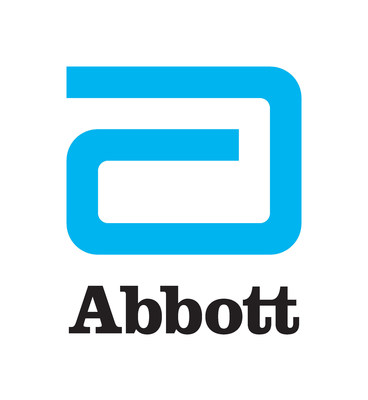Analysis of Landmark Study Showed Patients Treated for Left-Main Coronary Artery Disease with XIENCE Stent Felt Better Faster and Had Similar Long-Term Outcomes to Open-Heart Surgery
- Long-term health and quality of life were similar at three years for patients receiving a XIENCE stent and patients who underwent surgery
- Patients with more serious and complex disease and advanced age all experienced quality of life improvements when treated with XIENCE
DENVER, Oct. 30, 2017 /PRNewswire/ -- Abbott (NYSE: ABT) today announced that patients who underwent minimally-invasive implantation with a XIENCE coronary stent for left-main coronary artery disease had the same long-lasting health outcomes at three years but felt better more quickly than patients who underwent open-heart surgery.
The data were presented during a late-breaking session at the 29th Transcatheter Cardiovascular Therapeutics (TCT) meeting, the annual scientific symposium of the Cardiovascular Research Foundation.
"For any treatment, it's important to not only consider clinical outcomes such as recurrent heart attacks or stroke, but also to consider the effect of the treatment on a patient's quality of life," said Suzanne J. Baron, M.D., study investigator and assistant professor of medicine at the University of Missouri-Kansas City. "These data demonstrate that PCI is a reasonable treatment option for patients with left main coronary artery disease that allows them to potentially avoid surgery and to rapidly obtain a better quality of life after revascularization."
Quality-of-life was assessed at baseline, one month, one year, and three years. Patients were asked to report frequency of chest discomfort (angina), difficulty breathing, symptoms of depression and other physical and mental limitations.
After one month, patients who underwent percutaneous coronary intervention with XIENCE reported significantly greater freedom from angina (72 percent vs 70 percent; p<0.01); no difficulty breathing (60 percent vs 44 percent; p<0.01); and significantly fewer symptoms of clinical depression (8 percent vs 19 percent; p<0.01) than patients who had surgery. The significantly fewer symptoms of clinical depression extended to one year for XIENCE patients versus surgery patients (8 percent vs 12 percent; p=0.03) and were comparable by year three (9 percent vs 8 percent; p=0.77).
Freedom from angina and difficulty breathing were comparable after one year and maintained out to three years. Eighty-one percent of patients in the XIENCE group reported freedom from chest discomfort at three years compared with 82 percent in the surgery group (p=0.10). Forty-three percent of patients who received XIENCE vs 42 percent of surgery patients reported no difficulty in breathing at year three (p=0.77). The findings were consistent across different types of patients including people with diabetes, frequent chest pain before treatment and people over the age of 75.
"For years, we've debated over the best way to restore vessel function to patients with coronary artery disease," said Charles Simonton, M.D., chief medical officer of Abbott's vascular business. "It's important to weigh the benefits and risk of any treatment, and these data provide confidence that XIENCE can be considered as a potential option for many types of patients with coronary artery disease, including those with left-main disease."
About coronary artery disease:
Coronary artery disease is caused when cholesterol and fat build up inside the arteries that supply oxygen-rich blood to the heart. If blood flow to the heart is reduced or blocked, a person can experience chest discomfort (angina) or heart attack.1 Left-main coronary artery disease affects the artery that feeds blood to the left side of the heart, and is associated with increased chance of heart attack and poorer clinical outcomes compared with other types of coronary artery disease.
About the study:
The quality-of-life analysis was conducted based on data from the XIENCE EXCEL study (n=1,905), an international, open-label, multicenter randomized trial that compared the safety and efficacy of percutaneous coronary intervention with XIENCE versus surgery known as coronary artery bypass grafting (CABG) in patients with left main coronary artery disease. Quality-of-life was assessed at baseline, one month, one year and three years using the Seattle Angina Questionnaire (SAQ), the 12-item Short Form Health Survey (SF-12), the Rose Dyspnea Scale (RDS), the Patient Health Questionnaire (PHQ-8), and the EuroQOL (EQ-5D).
About XIENCE:
The XIENCE family of everolimus-eluting coronary stent systems are indicated for improving coronary luminal diameter in patients, including people with diabetes mellitus, de novo chronic total coronary occlusions, and people with symptomatic heart disease due to de novo native coronary artery lesions. XIENCE has an unprecedented safety profile, with consistent low rates of stent thrombosis, even in complex cases.6,7 A special coating on XIENCE interacts with proteins in the blood to reduce the risk for blood clots in the stent. For more information visit www.XienceProof.com/US.
For U.S. Important Safety Information, visit: https://vascular.abbott.com/Xience-Stent-Safety.html#isi
About Abbott:
At Abbott, we're committed to helping you live your best possible life through the power of health. For more than 125 years, we've brought new products and technologies to the world -- in nutrition, diagnostics, medical devices and branded generic pharmaceuticals -- that create more possibilities for more people at all stages of life. Today, 94,000 of us are working to help people live not just longer, but better, in the more than 150 countries we serve.
Connect with us at www.abbott.com, on Facebook at www.facebook.com/Abbott and on Twitter @AbbottNews and @AbbottGlobal.
__________________________________________
1 National Heart, Lung, and Blood Institute. What Is Coronary Heart Disease? https://www.nhlbi.nih.gov/health/health-topics/topics/cad. Accessed October 17, 2017.
SOURCE Abbott
For further information: Abbott Media: Kristina Becker, (408) 218-5482; Abbott Financial: Mike Comilla, (224) 668-1872
 BACK TO PRESS RELEASES
BACK TO PRESS RELEASES